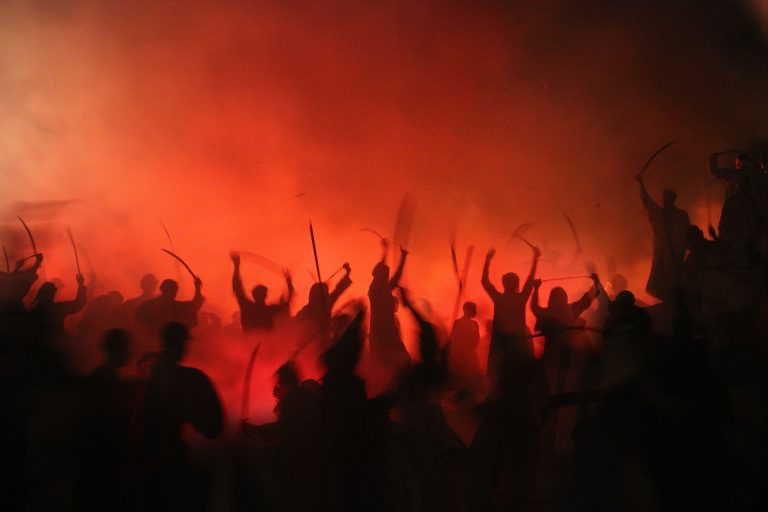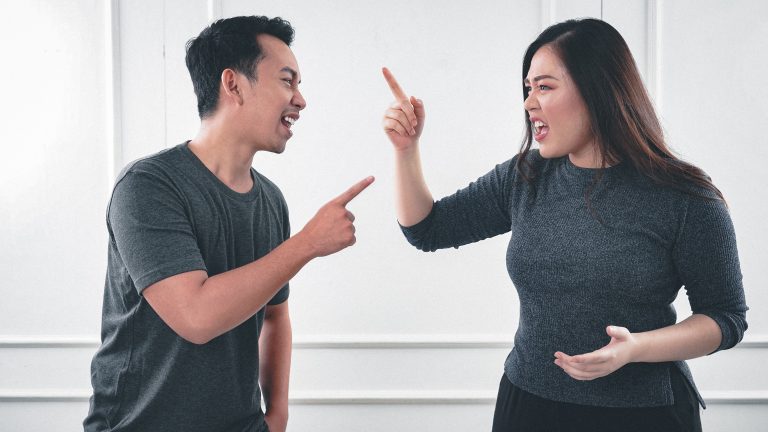Goju-Ryu Karate Belt Ranking System: A Comprehensive Guide
Goju-Ryu Karate is a traditional Okinawan martial art that traces its roots back to the late 19th century. It is a system that is based on circular movements and utilizes a combination of hard and soft techniques. Since its inception, Goju-Ryu Karate has become one of the most widely recognized martial arts styles in the world, with millions of practitioners worldwide. One thing that sets apart Goju-Ryu Karate from other martial arts is its belt ranking system. In this blog post, we will explore everything you need to know about the Goju-Ryu Karate belt ranking system.
The Origins of the Goju-Ryu Karate Belt Ranking System
The Goju-Ryu Karate belt ranking system dates back to the early 20th century when the founder of the style, Chojun Miyagi, introduced it to his students. Miyagi drew inspiration from the system utilized by Jigoro Kano, the founder of Judo, which had been implemented several years earlier. Miyagi believed that a ranking system would help motivate his students to improve their skills and provide them with clear goals to strive for.
The Belt Colors and Their Meanings
The Goju-Ryu Karate belt ranking system consists of ten colored belts, each indicating the level of mastery achieved by the practitioner. The colors of the belts, in ascending order, are:
– White
– Yellow
– Orange
– Green
– Blue
– Purple
– Brown (1st – 3rd degrees)
– Black (1st – 10th degrees)
White Belt (10th Kyu)
The white belt is the starting point for all students, regardless of age or experience. It represents purity, peace, and the beginning of the journey towards mastery of Goju-Ryu Karate. As a white belt, the student is introduced to the basics of the style, including stances, punches, kicks, and blocks.
Yellow Belt (9th Kyu)
The yellow belt represents the first level of achievement in Goju-Ryu Karate. At this level, the student has gained a basic understanding of the style’s fundamental techniques and concepts.
Orange Belt (8th Kyu)
The orange belt indicates that the student has made significant progress in their training and has demonstrated a commitment to learning the style’s advanced techniques and strategies.
Green Belt (7th Kyu)
At the green belt level, the student has reached an intermediate level of proficiency in Goju-Ryu Karate. They have demonstrated a solid understanding of the style’s techniques and are capable of applying them in sparring and self-defense situations.
Blue Belt (6th Kyu)
The blue belt represents the achievement of an advanced level of proficiency in Goju-Ryu Karate. At this stage, the student has demonstrated a deep understanding of the style’s techniques and can apply them with speed and accuracy.
Purple Belt (5th Kyu)
The purple belt indicates that the student has reached a high level of proficiency in Goju-Ryu Karate. They have demonstrated an exceptional understanding of the style’s techniques and can apply them effectively in a wide range of situations.
Brown Belt (4th – 1st Kyu)
The brown belt is divided into three degrees, with the fourth-degree representing the lowest level of achievement and the first-degree indicating the highest level of proficiency before the black belt. At this level, the student has demonstrated mastery of the style’s techniques, earning the respect of their peers and the admiration of their instructors.
Black Belt (1st – 10th Dan)
The black belt is the ultimate goal for all students of Goju-Ryu Karate. It represents mastery of the style’s techniques and its underlying principles. The black belt is divided into ten degrees, with the first degree representing the lowest level of achievement and the tenth degree indicating the highest level of mastery. Promotion to higher degrees in the black belt system is based on the individual’s dedication, skill, and knowledge of the style.
The Role of the Belt Ranking System in Goju-Ryu Karate
The Goju-Ryu Karate belt ranking system plays a vital role in the development of students. It provides them with clear goals to strive for, motivates them to improve their skills, and provides a sense of accomplishment as they progress through the ranks. Additionally, the belt ranking system enables instructors to evaluate student progress, identify areas that need improvement, and provide guidance to help students achieve their goals.
The Goju-Ryu Karate Belt Ranking System: Answering the Most Frequently Asked Questions
Karate has emerged as one of the most popular martial arts forms around the world. It is known for its different styles, each with its own unique features and techniques. One such style is Goju-Ryu Karate that emphasizes close combat and circular techniques to defeat an opponent. The Goju-Ryu Karate system has a distinctive ranking system based on different colored belts. Here are some of the most frequently asked questions about the Goju-Ryu Karate belt ranking system.
What is the Goju-Ryu Karate Belt Ranking System?
The Goju-Ryu Karate Belt Ranking System is a system that recognizes and rewards the progress of a karate practitioner from a beginner level to an advanced level. In Goju-Ryu Karate, the ranking system consists of ten levels, also known as Kyu, and ten levels of Dan.
What are the Colors of the Belts in the Goju-Ryu Karate System?
The belt colors of the Goju-Ryu Karate system are the same as many other karate styles. The colors of the belts in ascending order of ranking are white, yellow, orange, green, blue, brown, and black.
What is the Significance of the Belt Colors in the Goju-Ryu Karate System?
Each belt color in the Goju-Ryu Karate system has a meaningful significance. White represents innocence and purity, yellow signifies the first ray of light that illuminates the darkness, and orange represents hope and energy. Green represents growth and development, blue signifies the infinite sky, and brown represents the harvest. Finally, the black belt represents the culmination of the journey, the transformation from student to master.
What is the Criteria for Promotion from one Kyu Level to the Next?
There are different criteria for promotion from one Kyu level to the next in the Goju-Ryu Karate system. The criteria include knowledge of basic techniques, proficiency in Kata, mastery of Kumite, knowledge of the history of Goju-Ryu Karate, and the development of a proper attitude and character. A student must also fulfill the required training hours and demonstrate their knowledge and technique in front of a panel of experienced karate instructors.
Can a Student Skip a Kyu Level in the Goju-Ryu Karate System?
Yes, in certain circumstances, a student can skip a Kyu level in the Goju-Ryu Karate system. This is based on the student’s performance, capabilities, and experience. However, the decision to skip a level is solely at the discretion of the Sensei or chief instructor.
What is the Significance of the Black Belt in the Goju-Ryu Karate System?
The Black Belt in the Goju-Ryu Karate system is the highest level of achievement for a martial artist. It signifies the completion of a long and challenging journey filled with rigorous training and practice. It represents mastery of the techniques and demonstrates the highest level of proficiency in the art of Goju-Ryu Karate.
How Long Does it Take to Earn a Black Belt in Goju-Ryu Karate?
Earning a Black Belt in the Goju-Ryu Karate system is not an easy feat, and it requires years of rigorous practice and dedication. It usually takes several years, depending on the student’s capabilities and progress. However, the average time to earn a Black Belt in Goju-Ryu Karate is four to five years.
What are the Levels of Dan in the Goju-Ryu Karate System?
The Dan levels in the Goju-Ryu Karate system are ten in number. The first Dan level signifies the achievement of Black Belt, after which a student progresses to higher levels of Dan. The highest level of Dan is the tenth Dan, which represents the pinnacle of achievement in the art of Goju-Ryu Karate.
What is the Role of Kyu Levels in the Dan Ranking in the Goju-Ryu Karate System?
The Kyu levels are an essential aspect of the Dan ranking system in the Goju-Ryu Karate system. They represent the foundation of knowledge and technique that a student must possess to progress through the Dan ranks. Each Kyu level signifies a step forward in the journey towards achieving the highest level of Dan.
Goju-Ryu Karate Belt Ranking System: A Step-by-Step Guide
Karate is a popular martial arts form that involves various techniques including strikes, blocks, kicks, and punches. Goju-Ryu is a traditional style of karate that originated in Japan in the early 20th century. The Goju-Ryu Karate belt ranking system is used to determine a student’s progress in mastering the techniques of this martial art. In this guide, we will take a closer look at the Goju-Ryu karate belt ranking system and provide you with a step-by-step guide on how to progress through the belts.
The Basic Belt Ranking System
The Goju-Ryu Karate belt ranking system consists of ten belts, each represented by a specific color. The colors of the belts, in order of progression, are white, yellow, orange, green, blue, purple, brown, and black. The black belt ranking system, however, has ten degrees, known as „dan“.
Step-by-Step Guide to Earning Your Belt
Learning Goju-Ryu Karate involves several steps, and it may take several years for a student to progress through all the belts. Here is a step-by-step guide on how to earn your belt in Goju-Ryu Karate:
Step 1 – Find a School
The first step in learning Goju-Ryu Karate is to find a school that is reputable and accredited. The school should have trained and certified instructors who can teach you the basics and help you progress through the ranks.
Step 2 – Enroll in a Class
Once you have found a school that meets your needs, enroll in a beginner’s class. The instructor will teach you the basic techniques of Goju-Ryu Karate, including strikes, blocks, kicks, and punches. The beginner’s class is a critical stage in your learning journey as it will prepare you for the more advanced stages.
Step 3 – Learn the Basics
As you continue training, learn the basic movements required for your belt level. You will need to practice katas, which are a series of movements performed in a specific order. The katas teach the fundamental principles and techniques of Goju-Ryu Karate, such as proper form and posture, balance, and coordination.
Step 4 – Practice, Practice, Practice
To progress through the belts, you must practice regularly. Find a training partner to help you perfect your techniques, and always ask for feedback from your instructor. Attend extra training sessions, watch instructional videos and read up on the history and philosophy of Goju-Ryu Karate.
Step 5 – Test for Your Belt
Once you feel confident that you have mastered the techniques required for your belt level, you can approach your instructor for an assessment. The assessment will usually include a review of your kata and sparring techniques, among others. If you pass, you will be awarded the coloured belt representing the level of skill that you have achieved.
Conclusion
Achieving the Black Belt rank in Goju-Ryu Karate can take many years of dedicated training, and it is a reflection of your dedication and commitment to the art. Remember to approach your training with curiosity, patience, and persistence, and let the journey of mastering Goju-Ryu Karate be as fulfilling as the destination.
SEO optimization
To optimize for SEO, we recommend using long-tail keywords related to the topic, such as „Goju-Ryu Karate belt ranking system,“ „progress through the belts,“ and „step-by-step guide.“ Use these keywords naturally throughout the post, including in the headline tags (
) and as part of the meta descriptions. Additionally, ensure that your content is original, informative, and helpful to your readers, as search engines prioritize high-quality content. Lastly, use proper HTML formatting for your headings and paragraphs to make the content more accessible for search engine crawlers.
Inhaltsverzeichnis






